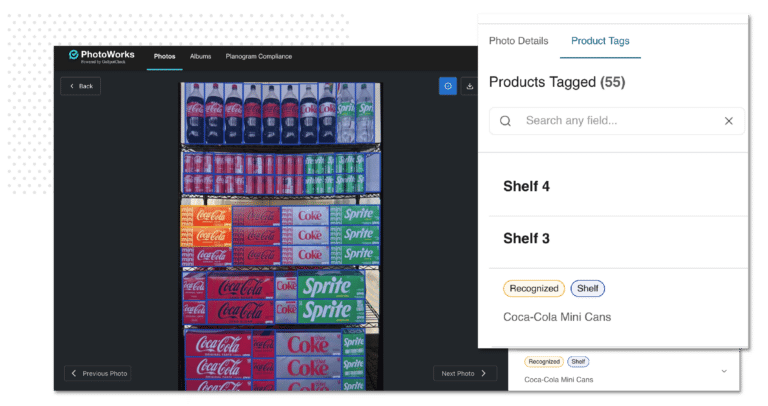The pandemic has been a challenge for the supply chain. It has exposed numerous vulnerabilities within safety processes, operational efficiency, and compliance. There’s a silver lining, though. This newfound clarity means that this is a prime opportunity to take a step back, re-evaluate your tools and methods, and re-engage with the work that lies ahead. With the current forecast stating COVID-19 will be a continuous obstacle in 2021, the only choice is to innovate. It’s time to get your data house in order and start your digital transformation.
Many of the shortcomings uncovered by this unprecedented event involved data: data about exposure to the pandemic, metrics on processes and people, even significant numbers on safety and quality. The tools you use to gather and analyze data are such critical touchpoints that ignoring them can spell disaster. The underlying problem here was that the traditional methods of collecting vital data are unreliable, slow, and disconnected.
The two primary culprits, paper and spreadsheets, are so ubiquitous that they’ve nearly faded into the background. The problems they present are often considered “the cost of doing business.” However, the pandemic showed us that they’re both a liability. Digitizing these two aspects of your data house, or your primary data collection infrastructure, can make a huge impact on how fast, actionable, and connected your information will be. Below, we’ve outlined a business case for digitization by addressing the elephant in the room: regulatory compliance in the wake of COVID-19.
Regulatory compliance—or, how to stop worrying and love the law
The supply chain has undergone irrevocable changes during the pandemic. There’s been ample scrutiny placed on organizations that handle and ship goods, and that’s not without reasonable concern. As Willy Shih points out in the September-October issue of Harvard Business Review, social distancing is now a necessity in factories, and other parts of the supply chain are no different. It’s up to individual companies to face down the harsh regulations and difficulties associated with pandemic prevention. And compliance, both within the typical safety protocols and pandemic-related guidelines, is crucial to continued operations.
Unexpected downtime due to a workplace sickening or injury isn’t something you want on your hands, especially now. It’s probably one of your top priorities to pay close attention to the regulations intended to prevent and mitigate such occurrences. After all, these regulations help you prevent costly outbreaks and safety infractions, making your warehouse, factory floor, or distribution center a more reliable conduit for logistics. With a digitized system for collecting safety and compliance data, regulations are nothing to be feared. If anything, they are the litmus test for your own internal compliance rules, helping you shape guidelines that meet and exceed the regulatory minimum.
Better data means better enforcement, and digital tools like mobile apps on smart devices put your managers back into the driver’s seat with the help of real-time information. When an incident such as a safety mishap occurs, managers are keyed into the event immediately with automated workflows. They might receive an email notification, or they’ll be a primary stakeholder in the automatically generated task to investigate.
That information also feeds into analytics systems which can be used to change policies based on real-world events. This is in stark contrast to paper forms, which could take hours, days, or even weeks to cross a higher-up’s desk. Meanwhile, the analytical side of this data might never see the light of day. Spreadsheets don’t get a free pass here, either. The unfortunate fact is that they’ll never be able to respond to incidents en media res like a mobile app can.
Think for a moment about the cost of noncompliance. It could result in fines, worker lawsuits, and ample unplanned downtime. In the age of pandemic prevention, the last thing you want going public is news of an outbreak. The price of encountering these issues is virtually incalculable, as is the value of avoiding them. So, when building a business case for digitizing your analog tools, consider this: what is it worth to your organization?
Efficiency and effective data: the road to a better understanding
There’s much to be said for getting information in the pipelines quickly and effectively. In some cases, a paper form has to travel literal miles before anyone does something about it. Even in the case that its results are re-entered digitally for an email or spreadsheet to be shared, that translates to a lot of time spent in limbo. Unfortunately, there’s no “pause” button on the supply chain. The world of logistics continues to spin on regardless of your data needs. That’s why it’s crucial to match the pace of the industry with faster technology.
One of the biggest timesinks in dealing with paper forms and spreadsheets is just how disconnected they are from other aspects of your business. They don’t directly interact with other tasks, systems, and efforts elsewhere in the organization—and that’s a huge vulnerability. With select digitally integrated systems, you can connect your existing process with virtually any other part of your infrastructure. Need to send out tasks based on specific inspection results? No problem. The form used to carry out that inspection will immediately fire off a work order that includes a custom deadline and parameters.
This is also true for any analysis systems you already use. Integrating data collection methods with your BI tools puts your finger directly on the pulse of your business, giving you the ability to turn on a dime. Rather than instituting new policies and waiting weeks or months to see any reports, you can instantly review the most granular data as soon as it’s submitted. This agility not only provides your management teams with a bird’s eye view, but it also offers unparalleled accountability. You’ll know who filled out which form, when they did it, and all the results. When asked for proof of your compliance, you’ll be able to pull up clear audit trails within minutes.
Just as we discussed in the previous point, the upfront cost of a digital system can easily be mitigated by the time savings you’ll experience. Workers in the field will get forms filled out quicker, meaning fewer hours spent on manual tasks. QR or barcode scanners make data entry quicker, while conditional logic guides each worker procedurally through their tasks. Data will automatically upload to the right parts of your business, eliminating the need for data double-entry. Most importantly, you’ll be able to access analytics on demand, meaning that no one will have to prepare extensive reports based on information fished from a data lake.
Long-term stability and longitudinal improvements
The “new normal” will be a factor for some time. Yet, it’s crucial that we learn from recent history, such as the 2007-2008 recession. As Professor Ralf Seifert wrote in a March article for IMD, “In the last major recession ten years ago, the inventory bounce fooled some upstream supply chains into thinking that demand was rebounding.” It was, in fact, not rebounding, causing upstream supply chain organizations to overcompensate. The result was disastrous. While collecting observable data doesn’t deal directly with the dynamics of supply and demand, the same principle holds true for internal efforts: don’t let history repeat itself. Stay ahead of trends and issues by understanding longitudinal data.
With paper forms and spreadsheets at work collecting data about safety, quality, and compliance, you’re unlikely to have a head start on trending issues. Understanding patterns from your analysis tool is something of a luxury. It may take weeks or months to get a grip on what’s actually going on throughout your own slice of the supply chain. Given the present market, it’s hardly a leap to say that these antiquated methods are a huge vulnerability. They don’t give you a clear, unobstructed view of your enterprise.
That’s where a digital system for collecting and analyzing data can make a huge impact. Integrating data collection methods with your BI tools puts your finger directly on the pulse of your business, giving you the ability to turn on a dime. Rather than instituting new policies and waiting weeks or months to see any reports, you can instantly review the most granular data as soon as it’s submitted. This agility not only provides your management teams with a bird’s eye view, but it also offers unparalleled accountability. You’ll know who filled out which form, when they did it, and all the results.
When asked for proof of your compliance or operational efficiency, you’ll be able to pull it up within minutes. Most importantly, you’ll be able to access analytics on demand, meaning that no one will have to prepare extensive reports based on information fished from a data lake. Decision-making will also benefit from better visibility. You can easily launch a new campaign, draw up relevant data, and observe the results. Then, when you have reached a conclusion, you can course-correct accordingly.
Next steps for the next normal in supply chains
Start building a business case for getting your data house in order today. If cost is an issue, consider the benefits of the time saved, compliance issues avoided, and analysis opportunities afforded. Working on paper and spreadsheets puts your organization at a dramatic disadvantage when your competitors are already undergoing their own digital transformations. Don’t get left behind because the pandemic made you apprehensive. Now is a unique opportunity to seize the moment and make smart changes to your process. Begin by observing your current process and compare it to the ideal: are you getting data quickly? Can you make informed decisions before deadlines? Are your inspections on the warehouse or distribution center floors reliable and connected to analysis tools? Think on these questions, and you’ll start to form a more cohesive picture of how much you can improve your data collection efforts.
The best way to keep supply chain operations running smoothly is by integrating and automating them with a mobile solution. Form.com specializes in helping logistics organizations mobilize flexible forms that match their existing process perfectly. Learn more about how we can jumpstart your digital transformation by getting in touch with a solutions expert. Or, upload your current forms, and we’ll configure a personalized demo based on them.







